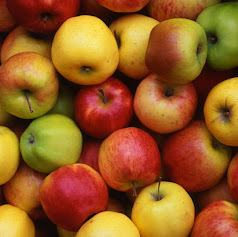We live in a time of crisis, uncertainty, and turmoil. Our time has been given a number of terminologies – poly-crisis, meta-crisis, environmental and social collapse, a predicament.1 A number of titles for our epoch have been suggested – the Great Turning, the Great Simplification, and the Anthropocene. The last of these (Anthropocene) was officially approved as a division of geologic time by the International Union of Geological Sciences in July 2022.2
Although nothing is ever definitive, many of the
measures of planetary well-being are pointing to collapse of the world as we
know it. Business As Usual cannot and will not continue.
Furthermore, our attempts to solve our way out
of this are not working. More often than not our technological efforts at doing
so only exacerbate the situation or shift the issue of concern from one part of
the planetary system to another.
So, how do we, both individually and collectively,
respond and cope with this? Do we just give up? Do we stop responding?
No! We still have our humanity.
Humanity – the quality of being humane. We
still retain the virtues and values of compassion, benevolence, kindness,
altruism, love that go towards defining us as human beings.
Yes, certainly, within human beings there also exist
traits that go against these virtues. It does not take much to see hatred,
division, violence, narcissism, and greed in the world.
Seeing these examples of ill-will is why we must work
to retain our humanity (as defined above.)
Recognising, seeking, and holding onto our humanity
has been a universal quest for millennia. The Chinese virtue of ren was
important in the Confucian philosophy two and a half thousand years ago. Ren
can be translated as co-humanity (thus emphasising the collective nature
of the term) but let us consider how Confucius himself defined it.
‘Wishing to
be established oneself, (one) seeks also to establish others; wishing to be
enlarged oneself, (one) seeks also to enlarge others.’
Confucius also spoke of seeking ren. ‘Ren is
not far off, (the one) who seeks it has already found it.’
Clearly, Confucius
understands that there is no distinction between the ends (humanity – ren) and
the means (humanity – ren.)
We become humane by being
humane.
Over the centuries many
teachers, philosophers, spiritual leaders, and others have also written and
spoken about humane virtues. Most of us can identify some of these: Plato,
Aristotle, Jesus, Gandhi, the Dalai Lama for example.
More recently the field
of psychology has begun to inquire into virtues and values and has found –
unsurprisingly – that there is a quantifiably greater psychological and
subjective well-being in individuals who place the values associated with humanity
at the forefront of their being.
Furthermore, our humanity
does not stop with humans. Our humanity extends to all creatures, and
outward to encompass the planet as a whole. Humanity in this sense is
not anthropocentric.
The epoch we are presently
in is a dire one for Homo sapiens. We may not get through it. Thus far, our
human facilities of innovation, mechanical enterprise, problem-solving, and
technology have not prevented us arriving at this time, into this mess. Nor,
will these facilities enable us to get out of the mess, or even through it.
What is most likely to permit
us to stumble our way through this predicament is our humanity.
Accordingly, our humanity
is all we have left. Indeed, it may be all we have ever had.
Notes:
1. Technically these terms
are not quite the same. Tom Murphy (professor of physics at the University of
California) describes the difference between poly and meta-crisis. ‘All the
identified problems that constitute the “poly” stem from a single
“meta.” The attitude of separateness from the community of life, the sense
of superiority over other species, and self-praise over
artificial accomplishment is what allowed the ugly profusion of poly problems.’ Tom Murphy, A Story
of Mice (and Men,) 19 December 2023, in Do The Math.
2.
The exact beginning of the Anthropocene is
unclear, with experts suggesting anything from the start of the Agricultural
Revolution (around 12,000 years ago) right up to 1960. However, it should be
remembered that the Anthropocene is viewed in geological time scales, not human
ones.








_Llanrhystud.jpg_01.jpg)

